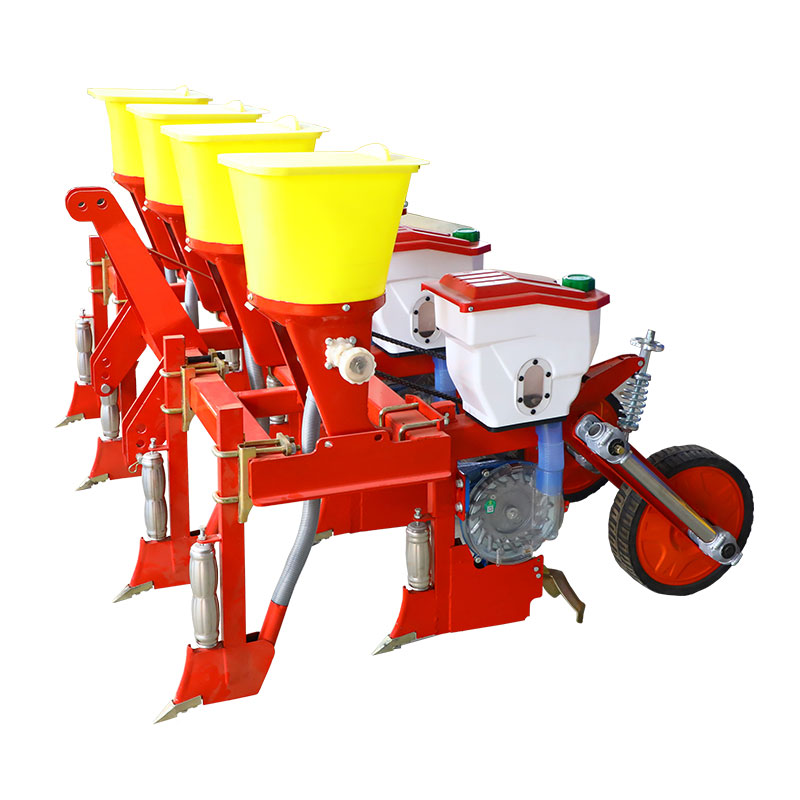
 English
English  Español
Español Português
Português русский
русский Français
Français 日本語
日本語 Deutsch
Deutsch tiếng Việt
tiếng Việt Italiano
Italiano Nederlands
Nederlands ภาษาไทย
ภาษาไทย Polski
Polski 한국어
한국어 Svenska
Svenska magyar
magyar Malay
Malay বাংলা ভাষার
বাংলা ভাষার Dansk
Dansk Suomi
Suomi हिन्दी
हिन्दी Pilipino
Pilipino Türkçe
Türkçe Gaeilge
Gaeilge العربية
العربية Indonesia
Indonesia Norsk
Norsk تمل
تمل český
český ελληνικά
ελληνικά український
український Javanese
Javanese فارسی
فارسی தமிழ்
தமிழ் తెలుగు
తెలుగు नेपाली
नेपाली Burmese
Burmese български
български ລາວ
ລາວ Latine
Latine Қазақша
Қазақша Euskal
Euskal Azərbaycan
Azərbaycan Slovenský jazyk
Slovenský jazyk Македонски
Македонски Lietuvos
Lietuvos Eesti Keel
Eesti Keel Română
Română Slovenski
Slovenski मराठी
मराठी Srpski језик
Srpski језик
Do you know the specific working parts of a seeding machine?
2025-04-11
The seeding machine mainly uses tractors and towed seeders to perform seeding tasks. Timely and accurate execution of the seeding process can significantly optimize the quality of seeding and ensure that the seeds germinate and grow at the scheduled time and in an ideal environment, which is very important for increasing crop yields and ensuring a good harvest. In practice, seeding operations often encounter various problems, which will interfere with the effectiveness of seeding. In order to improve seeding efficiency and quality, we need to understand the technical attributes and functions of the core components of the seeding machine. The seeding machine also has many working parts.

(1) Seeder
The seeder continuously and evenly releases seeds from the seed box according to seeding needs. During operation, the seeds fill the container of the seeder and the groove of the groove wheel with their own weight. As the outer groove wheel rotates, the groove wheel forcibly pushes the seeds to be released from the bottom. This process is called lower discharge. By adjusting the speed of the outer groove wheel and the working length of the outer groove wheel in the seeding cup, the seeding groove wheel can be moved horizontally, thereby adjusting the seeding amount. In some drill designs, when handling larger seeds, the outer groove wheel will rotate in the opposite direction, causing the seeds to be discharged from top to bottom. This process is called top discharge. The outer groove wheel has large and small groove wheels. For small seeds, when using a small groove wheel for sowing, a moderate increase in the rotation speed can significantly improve the uniformity of seed discharge, which is better than using a large groove wheel. The spacing between the outer groove wheel and the seed discharge tongue is adjustable to meet the sowing needs of seeds of different sizes.
(2) Fertilizer discharger
The horizontal star wheel fertilizer device mainly consists of a fertilizer star wheel and a percussion hammer. During operation, the star wheel teeth carry the fertilizer to the fertilizer discharge port, and then the percussion hammer acts on the fertilizer to make it fall into the fertilizer delivery pipe.
(3) Furrow opener
The function of the furrow opener is to open the furrow and cover it with wet soil immediately after sowing. During operation, under the influence of its own weight and the additional spring force, the two discs roll and move, and the soil is cut and pushed to both sides, thereby forming a sowing furrow. Then, the seeds and fertilizers fall directly to the bottom of the furrow through the seed guide tube in the center of the furrow opener. After the disc is operated, the moist soil below the furrow wall covers the seeds, and then covers them with dry soil. Some small, low-speed grain seeding machines are equipped with hoe-type furrowing devices. The hoe-type furrow opener is simple in design, light and easy to manufacture. However, it faces several limitations in practical applications, including easy to hang weeds, clogging soil, and causing dry and wet soil mixing.
In life, the seeder greatly reduces our labor costs and improves our agricultural work efficiency.




